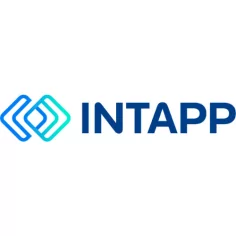Intapp: MBD talent in client facing roles drives revenues and engagement – here’s how
Law firms have invested in hiring client-facing business development staff over the past several years, and that trend is only likely to grow.
As clients continue to expand and mature their operations teams, they bring greater rigor to their management of external counsel. Subsequently, the demand for sophisticated, full-time client servicing models is increasing, and firms are focused on staffing these roles.
NewLaw models have created opportunities for sales teams, as well as for a broader set of non-legal professionals who are part of the delivery team, such as project managers and legal technologists. Some firms are focused on expanding into certain sectors, which means they need professionals with the networks and insights needed to succeed with go-to-market initiatives.
Across the board, marketing and business development staff have become an integral part of the client service team and are on point to handle certain aspects of client relationship management. With the legal industry rapidly evolving and innovating, legal marketing and business development staffs in client-facing roles are both driving revenue and improving the experience throughout the client lifecycle journey.
Consequently, firms are competing for scarce talent that can help them go out to the field, develop relationships, and sustain client relationships.
Delivering better service with cross-functional client service teams
In the past, client service teams were limited to lawyers and their assistants. Today, firms are augmenting their teams to include a range of other professionals as the delivery of a firm’s legal advice evolves to include technologists, project managers, and other professional specializations, working alongside lawyers in a coordinated effort.
The client-facing roles that marketing and business development talent play in delivering value extend far beyond prospecting, making introductions, and positioning the firm through a client’s selection process. Especially in a tighter economic climate, forward-thinking firms seek to demonstrate their value through providing ancillary resources, advice, and touch points that serve to deepen and broaden relationships.
Offering access to relationship managers, knowledge management experts, professional support, project management, and legal technologists provides an immersive partnership experience. When clients can get all the support they need from trusted sources, they’re more likely to remain engaged and satisfied. Business development professionals, with strong listening and communication skills, are ideally positioned to facilitate this approach, bringing together relevant aspects of the firm that align with client needs.
Strengthening relationship management through client listening
Client listening — conducting interviews and debriefs with clients to gather important feedback — gives marketing and business development teams the opportunity to capture timely and actionable insights on client needs as well as the firm’s perceived areas of strength, need for improvement, and appropriate remediation.
The content and structure of client listening exercises will depend on the knowledge your firm wants to obtain. Many firms perform reviews either annually or biannually as a foundational component of assessing the health of client relationships. These should be supplemented by matter reviews, either at the end of a project or — for longer-running, more complex matters — during them.
Business development staff who are part of the team to win and onboard a client should check in with the client team to ensure the project is proceeding as expected and reset any areas of misalignment early on to demonstrate ongoing commitment to the client. Analyzing data-driven indicators like changes to new matter velocity, the number of practice groups engaged, and the strength of key relationships also empowers firms to flag at-risk clients and implement remediation measures if needed and appropriate.
The first step in this process entails a candid internal conversation, followed by an honest discussion with the at-risk client representatives about recent experiences with your firm and their short- and long-term priorities. For this type of client-listening exercise, many firms elect an independent facilitator who is often a senior member of the BD team — sufficiently independent of the day-to-day relationship, but with a depth of understanding of the firm’s practices, offerings, and teams to facilitate a meaningful dialogue with the client.
Using purpose-built technology to win business
To assemble stronger client service teams for complex matters, creating a department-wide plan for technology investment and management will greatly support this effort. For example, if a request for proposal (RFP) comes in that requires highly specialized expertise, the right CRM will help you identify the lawyers in your firm who are best suited to the matter.
If your CRM captures experience data that catalogs the skill sets, industry expertise, location, and specializations for all the lawyers in your firm, you’re in a great position to assemble a strong matter team. Simply by performing a basic search (“Who in our firm has experience doing life sciences M&A work in France?”), you can quickly identify the professionals who fit the criteria to best support your client.
When you’re able to leverage robust data sets to surface this information, your firm builds not only competitive advantage through better relevancy during the proposal process, but also the ability to command premium fees for niche expertise.
To learn more about OnePlace Marketing & Business Development, schedule a demo.



